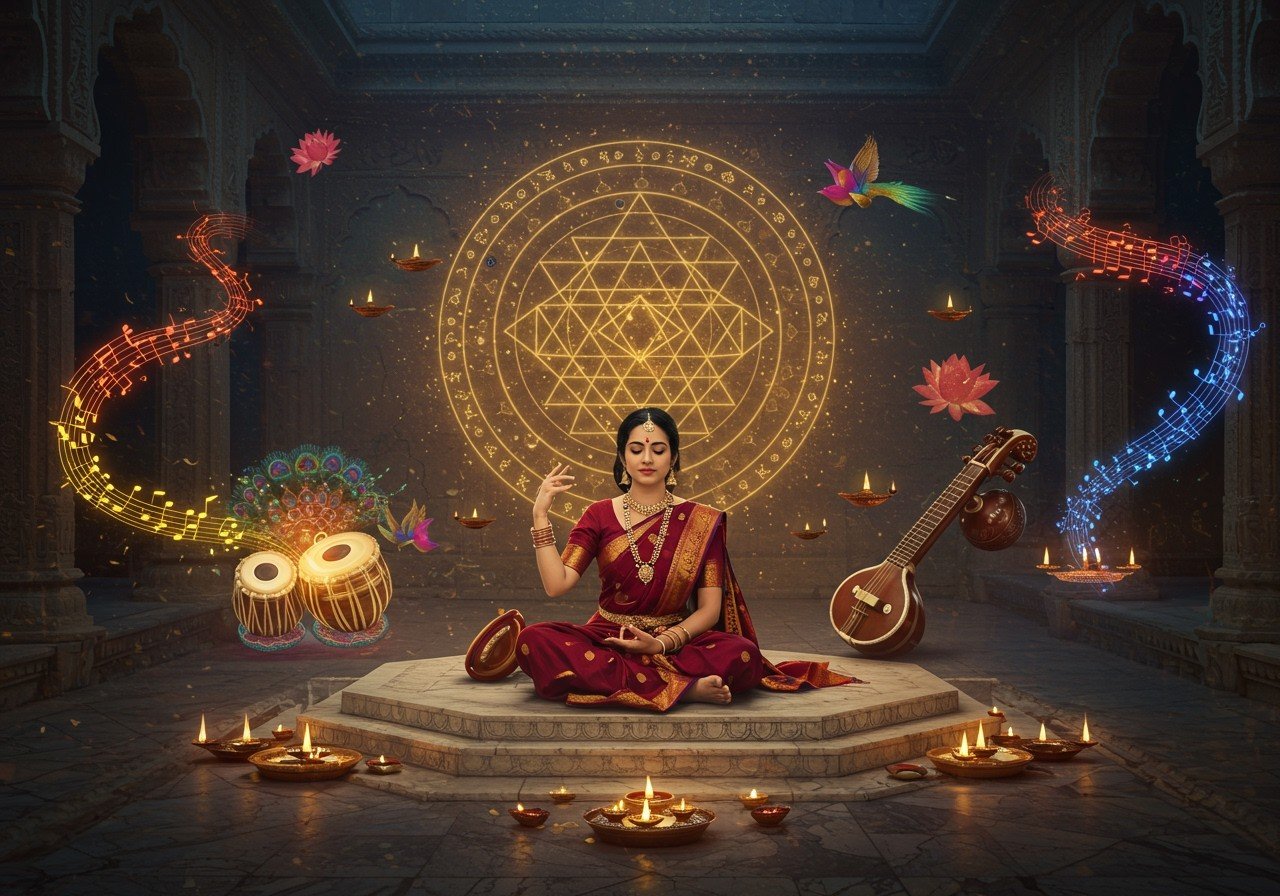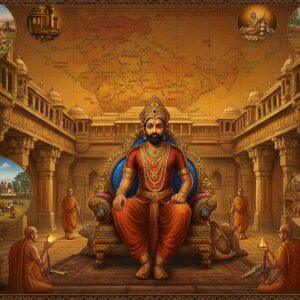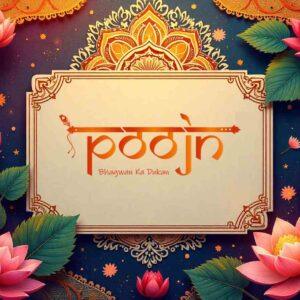
Hindu classical music, a tradition as ancient as India itself, is deeply intertwined with our cultural and spiritual lives. Passed down through generations, it’s a vibrant expression of devotion, emotion, and artistic brilliance. This captivating art form, also known as Shastriya Sangeet or Marg Sangeet, has evolved over millennia, with roots tracing back to the Vedic period and drawing influences from sacred texts like the Natya Shastra. It plays a vital role in Hindu rituals, festivals, and everyday spiritual practices, creating a powerful link between sound, spirituality, and the divine. Over time, this rich musical heritage has blossomed into two distinct streams: Hindustani music in the North and Carnatic music in the South, each with its unique character and charm. Even today, this tradition thrives, preserving our cultural heritage while resonating with the modern world.
The Essence of Hindu Classical Music
At the heart of Hindu classical music lie two fundamental elements: Raga and Tala. These form the pillars upon which the entire edifice of this musical tradition rests. Imagine them as the warp and weft of a beautiful tapestry, each contributing its unique character to the overall design.
- Raga: This is the melodic soul of the music, the very framework upon which melodies are built. Think of it as a blueprint, a set of notes with a distinct melodic personality and emotional color. Each raga has its own unique ascending (Arohana) and descending (Avarohana) sequence of notes, giving it a characteristic mood and evocative power. Some ragas are associated with specific times of day or seasons, adding another layer of meaning to their performance.
- Tala: This is the rhythmic heartbeat of the music, the time cycle that provides structure and pulse. It’s the mathematical framework that governs the rhythm and tempo, creating a steady foundation for the melodic improvisations to unfold. The tala provides a sense of order and predictability, allowing the listener to follow the intricate rhythmic patterns.
Improvisation is a cornerstone of Hindu classical music, allowing musicians to explore the depths of each raga and tala with creativity and spontaneity. Performances often take on a spiritual dimension, becoming a pathway to transcendence and a medium of communication with the divine. Instruments like the sitar, tabla, veena, and mridangam are integral to this musical tradition, each lending its unique voice to the rich tapestry of sound.
Delving into Raga: The Melodic Framework
The raga is not merely a sequence of notes; it is a living entity, a melodic framework with its own unique personality and emotional depth. Each raga embodies a distinct mood, a rasa, that resonates with the listener on a profound level. This is where the beauty and complexity of the music truly come alive. These notes and the ascending (Arohana) and descending (Avarohana) sequences of a raga are carefully constructed to create specific moods and emotions, making each raga a universe in itself.
Imagine the serene tranquility of a morning raga, gently awakening the senses, or the passionate intensity of an evening raga, stirring the soul. The concept of rasa, the emotional essence of a raga, connects the music directly to the listener’s heart, transforming each performance into an intimate emotional journey.
Beyond their aesthetic beauty, ragas have long been recognized for their therapeutic potential. In music therapy, specific ragas are used to evoke particular emotions, helping to heal and balance the mind and body. Mastering a raga requires years of dedicated practice and study, as musicians delve into its intricate nuances and explore its expressive possibilities. Popular ragas like ‘Bhairav’ or ‘Yaman’ are not just musical forms; they are cultural treasures, carrying the weight of history, tradition, and spiritual significance.
The Foundation of Sound: Swaras and Scales
The building blocks of Hindu classical music are the swaras, the seven fundamental notes: Sa, Re, Ga, Ma, Pa, Dha, Ni. These notes, combined with subtle variations and microtones (shrutis), create the rich and complex melodic landscape of Indian music. This gives the music its unique character, allowing for a wide range of melodic expressions.
Unlike the equal temperament system used in Western music, Indian classical music employs just intonation, where each note is tuned to a specific frequency ratio, giving it a distinct and pure sound. The tuning system used in Indian music is a precise art, each note carefully adjusted to create the perfect harmonic balance.
Scales, known as ‘Saptak’, play a critical role in the construction of ragas. They determine the mood and character of a raga, shaping its melodic contours. In Carnatic music, the Melakarta system provides a comprehensive framework for classifying ragas based on their scales, offering a structured approach to exploring their intricacies. The rigorous training required to master these scales emphasizes both technical precision and emotional expression, ensuring that musicians can convey the full depth and beauty of the music.
A Timeless Legacy: Cultural and Social Impact
Hindu classical music is deeply woven into the cultural and social fabric of India. It serves as a powerful force for unity, bringing people together through shared musical experiences. Through its melodies and rhythms, the music preserves and transmits historical narratives, myths, and legends, keeping our rich cultural heritage alive. During India’s struggle for independence, music played a vital role, inspiring patriotism and fostering a sense of collective identity.
This ancient art form is inextricably linked to other traditional art forms like dance, poetry, and theater, creating a vibrant tapestry of cultural expression. Think of the graceful movements of Bharatnatyam dancers, their every gesture perfectly synchronized with the rhythmic cycles of Carnatic music, or the evocative verses of ancient Sanskrit poetry, set to music and brought to life through the power of melody and rhythm.
In the face of rapid cultural changes and the pressures of modernization, preserving this precious heritage becomes even more critical. Dedicated individuals and organizations are working tirelessly to promote and support classical musicians, ensuring that this ancient tradition continues to flourish.
Resonating in the Modern World: Contemporary Relevance and Global Influence
Despite its ancient roots, Hindu classical music remains remarkably relevant in the 21st century. Contemporary artists are exploring new avenues of expression, blending traditional elements with modern genres, creating a dynamic and evolving musical landscape. This fusion of old and new is attracting new audiences, both within India and across the globe. Through innovative collaborations and cross-cultural exchanges, Indian classical music is finding new life and reaching new ears.
Digital platforms have played a transformative role, making classical music accessible to a global audience. Music festivals and concerts provide a platform for artists to showcase their talent and connect with listeners from diverse backgrounds. These events celebrate the rich cultural heritage of Indian music and foster cross-cultural understanding and appreciation.
Collaborations between Indian and international musicians are becoming increasingly common, leading to exciting new musical fusions. These collaborations not only introduce Indian classical music to new audiences but also enrich the global musical landscape. Music education plays a vital role in nurturing the next generation of musicians, ensuring that this timeless tradition continues to thrive and inspire.
How Poojn.in Supports Your Classical Music Journey
At Poojn.in, we understand the deep connection between music, spirituality, and tradition. That’s why we offer a curated selection of products to enhance your musical pursuits and devotional practices. Explore our offerings:
Musical Instruments for Devotional Use
- Pure brass bells and ghanta: Fill your space with auspicious sounds.
- Traditional manjiras (hand cymbals): Perfect for bhajans and kirtans.
- Conch shells (shankh): Enhance your sacred ceremonies and daily rituals.
Puja Items for Music Deities
- Complete puja sets for Goddess Saraswati worship: Honor the goddess of knowledge, music, and arts.
- Special incense and dhoop for music rooms: Create a serene and sacred atmosphere for your practice.
- Brass and copper aarti thalis for musical ceremonies: Elevate your musical offerings.
Convenient Shopping Experience
- Direct home delivery across India: Receive your items conveniently at your doorstep.
- Authentic, quality-checked products: We ensure the authenticity and quality of every product.
- Secure online payments: Shop with peace of mind using our secure payment gateway.
- Expert guidance on product selection: Our team is here to assist you in choosing the right products.
For personalized assistance, contact us at:
Phone: 03369029784
WhatsApp: 9476142738
Visit poojn.in to explore our complete collection. Quality assurance and secure packaging are guaranteed for every purchase.
Conclusion
Hindu classical music stands as a testament to India’s rich cultural heritage. It is a timeless art form, blending emotion, spirituality, and artistic expression. The raga, with its unique melodic framework, provides the emotional core of this music, while the swaras and scales create the foundation for its rich and varied soundscapes. From ancient rituals to modern concert halls, this music continues to inspire and uplift, connecting us to our past while resonating with the present. Through education, innovation, and global collaborations, Hindu classical music continues to evolve, ensuring its vibrant presence in the world for generations to come.
FAQs: Hindu Classical Music: An Exploration
What exactly is Hindu classical music? It’s a traditional music form from India, with two main branches: Carnatic from the South and Hindustani from the North. Both use unique scales and ragas to create beautiful melodies.
How is a raga different from a scale? A raga is like a melodic blueprint, a framework for creating melodies with specific notes and rules. A scale, on the other hand, is simply a sequence of notes in ascending or descending order. Ragas are known for their ability to evoke specific emotions or be associated with particular times of the day.
Why are ragas so important? They are the heart of Hindu classical music, giving structure, emotion, and depth to the music. Each raga has its own distinct mood, allowing musicians to express a vast spectrum of feelings and emotions. Musicians use ragas to tell musical stories and create an immersive experience for the listener.
Which instruments are commonly used? Instruments such as the sitar, tabla, veena, harmonium, and mridangam are frequently heard in Hindu classical music. They help create the characteristic sound of the music and provide accompaniment for vocalists or soloists.
Can I learn Hindu classical music too? Absolutely! Anyone can learn with dedication and practice. It involves understanding the theory behind the ragas and scales, coupled with consistent practice, whether it’s singing or playing an instrument.
How does a typical performance go? Performances typically begin with a slow introduction of the raga (alap), followed by faster sections. Musicians often improvise within the raga’s framework, demonstrating their skill and creativity. This makes every performance unique.
What makes people enjoy this music so much? People connect with Hindu classical music for various reasons: its rich tradition, emotional depth, and the improvisational brilliance of the musicians. It can evoke feelings of peace and connection to Indian culture.
What’s the role of improvisation? Improvisation is a core aspect. It allows musicians to add their own creative expression within the boundaries of the raga, making each performance spontaneous and engaging. It’s where the artist’s personality and the tradition’s depth truly shine.


